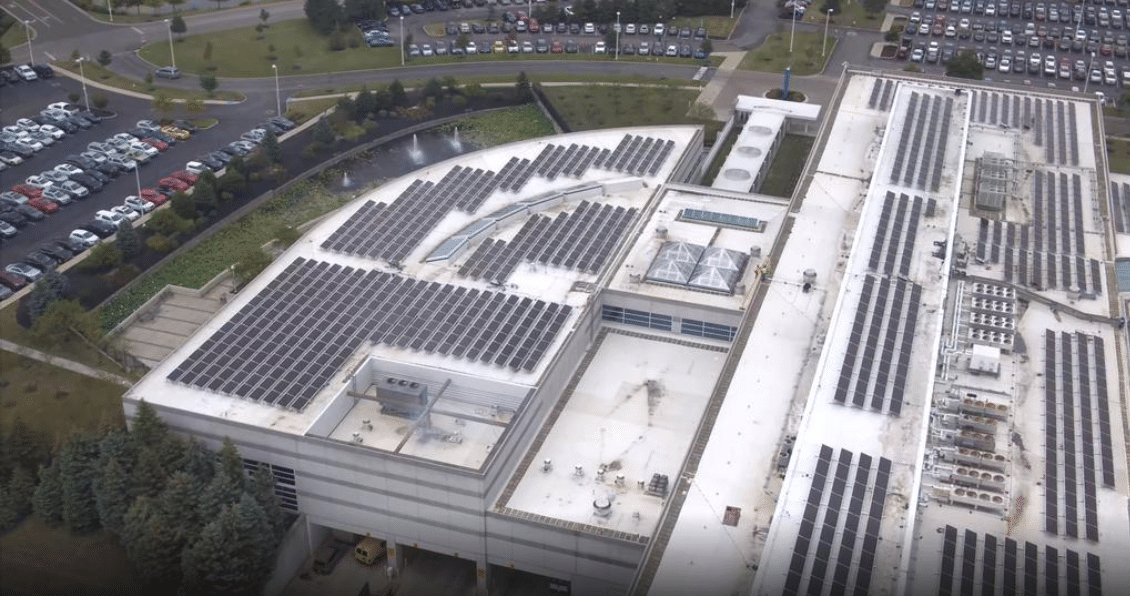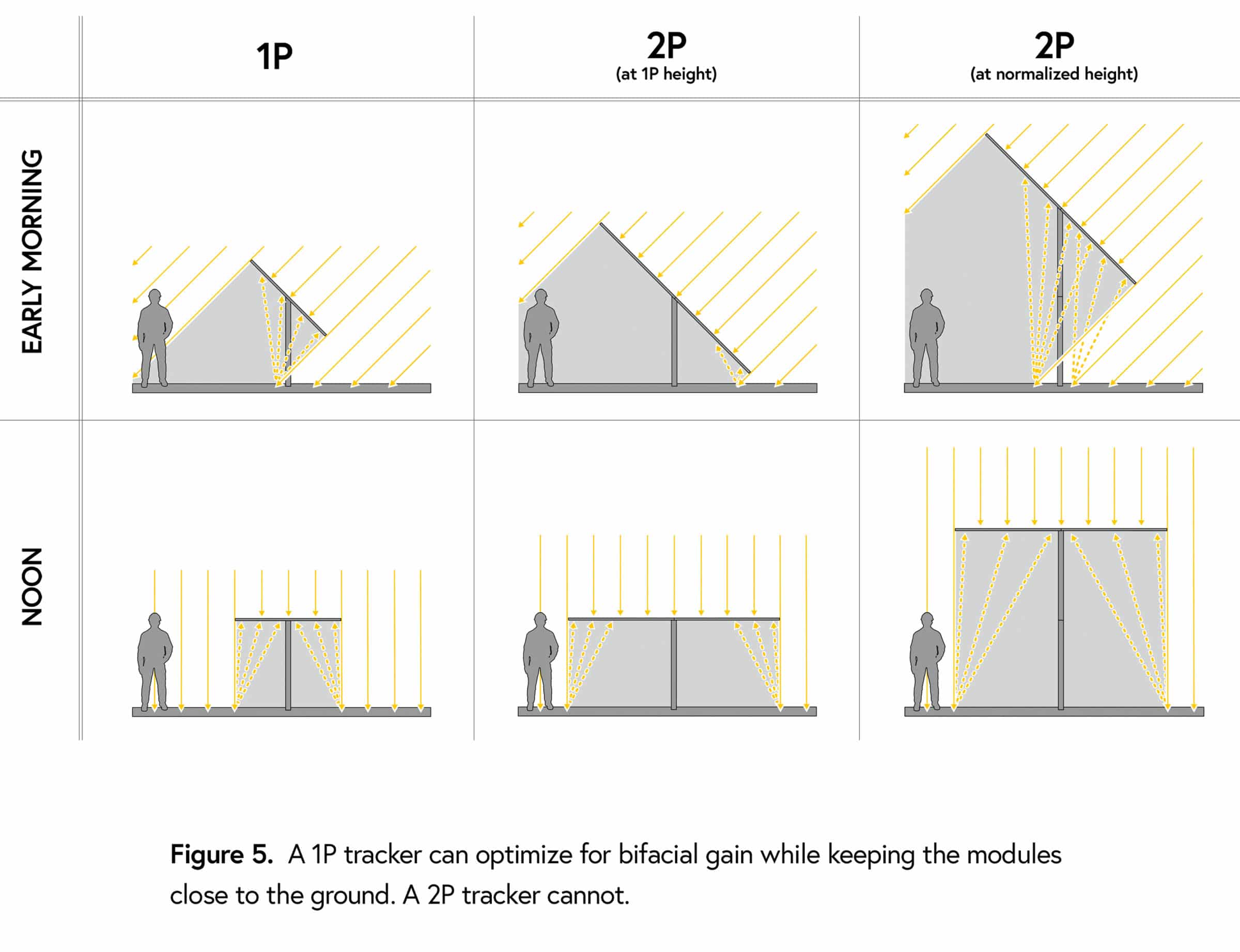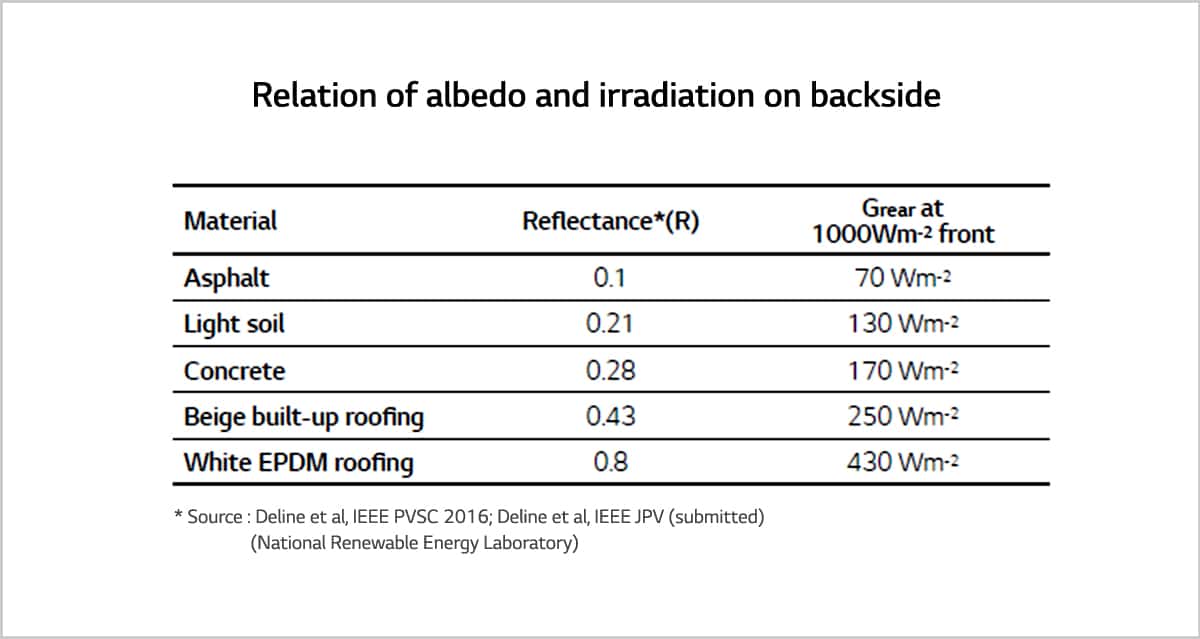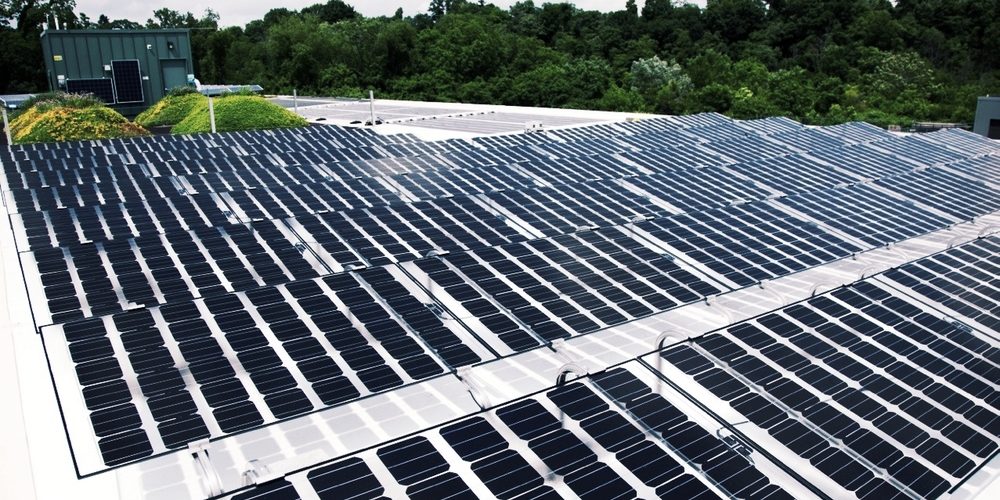As of yet, the data suggests that to gain the greatest benefit from bifacial solar modules, you need place them at least a meter or more above the ground to maximize the reflection that the backside of the module gains.
Per coverage by local reporter Tristan Navaera, JP Morgan Chase has completed an installation of 2.8 MW of bifacial solar modules (image of actual site below), manufactured by Prism Solar in Highland, New York. The company currently manufactures 60 and 72 cell frameless bifacial solar modules on their 60 MW/year lines. The 72 cell product ranges from 360 to 370 watts (pdf specification page), meaning somewhere between 7,500 and 7,800 solar modules were installed.

Prior news noted that Prism Solar signed a module supply agreement which named them the preferred supplier for 2017-2020 JPMorgan Chase Solar PV (Photovoltaic) Installation Program for locations in the USA. JPMorgan Chase has noted a goal of powering their facilities with 100% renewable energy.
But now, the purpose of writing this article (beyond what might be the world’s largest rooftop bifacial solar installation) – will bifacial solar modules gain any appreciable benefit when they are installed close to the roof, on an all white surface?
As of now, the professionals in the know have told pv magazine USA that the height that bifacial solar panels are installed at makes all the difference. NEXTracker’s Daniel Shugar told us that when installing bifacial modules on single axis trackers, their two-in-portrait NX Gemini system does produce less, all things being equal (which they aren’t when considering which technology to use), than their Horizon system – which is closer to the ground.
Sunfolding published an article with us giving us a rough logic (below image) showing why they believe single module single axis trackers benefit the most from ground reflection. Their equations, and they are a very mathematics focused organization, suggest that somewhere around the single axis module height just fits best.

And this author, who is focused on commercial and industrial (C&I) rooftops does not debate where the best benefit comes for bifacial solar modules. First off, because this author is not an analyst and we don’t have the machines to test these things, but secondly and most importantly, because C&I doesn’t need the best benefit.
While manufacturers like LONGi boast that, under perfect conditions, bifacial modules can potentially boost production by 20%, we in the C&I space merely need some benefit – and what that value is, depends on what the additional costs using bifacial solar modules on the rooftop will be.
And we do expect to have at least some benefit. First off, the C&I rooftop is the home of the white thermoplastic olefin (TPO) roof is well known for its ability to reflect heat (lowering cooling costs as well) and light. White TPO offers the highest albedo ratings of any material as LG Solar points out in the below image.

To make the best use of this product will require pressure washing under the modules as the reflectivity falls off quickly if the roof gets dirty, and flat roofs definitely do as water pools. However, modules do occasionally need be cleaned anyway – so maybe we won’t add a unique cleaning, but a more indepth cleaning. A second cost variable to consider might be the hardware used, as noted in the main image, the Prism Solar modules are frameless, glass on glass and use a clip system for their racking versus standard products on the markets. Will the hardware or installation process cost more?
This author doesn’t know the answer yet, but they assume even if there is a few percentage points of additional production from the product spread over the 30 year lifetime of the modules, then it becomes more than worth it to spend a few extra pennies on day one. More industry experience is needed, and we hope to see the PVELs and NRELs or the world to teach us, or we’ll simply make a judgment call and go for it – as JPMorgan Chase has.
This content is protected by copyright and may not be reused. If you want to cooperate with us and would like to reuse some of our content, please contact: editors@pv-magazine.com.









…”simply make a judgment call and go for it”…. Love it.
Bifacial panels on a white TPO rooftop allows the rooftop itself to be eligible for the ITC. If you’re installing a new roof and add bifacial panels, the cost of the roof is fully covered by tax credits. Only works with a new rooftop though.
Bifacial array optimization is still poorly understood but I can share one experience: I spec’d Prism bifacial panels over a white TPO roof – 154 kW front-side rating feeding 166.5 kW SolarEdge inverters that produced 245,000 kWh its first 12 months. Think about what that means for backside contribution not to mention the time of day generation profile being awesome for a non-tracking system – exactly what everyone wants. Row spacing and some other things make a huge difference as well as height – I was the first owner to put the panels over 1 M high on the high side (4 ft, 2 ft low side) at 30 deg tilt. It’s time to stop thinking in terms of just jamming more panels on a field: the point re. 1P vs. 2P trackers is well made and relevant, but you’d still be surprised what you will get out of 2P tracker if you don’t jam up all the rows the same as your last monofacial design where backtracking is already cutting off late day production. It’s a different approach and it can work really, really well IMO.